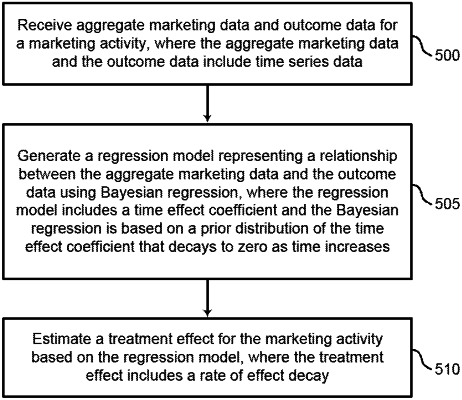| CPC G06Q 30/0201 (2013.01) [G06N 7/01 (2023.01); G06Q 30/0205 (2013.01); G06Q 30/0242 (2013.01); H04L 67/535 (2022.05); H04N 21/812 (2013.01)] | 13 Claims |

|
1. A computer-implemented method for data analytics, comprising:
training, by a processor, an artificial neural network to model a relationship between a marketing activity and an online activity;
receiving, by the processor, first aggregate marketing data during a first time period prior to the marketing activity, wherein the first aggregate marketing data includes information about a set of products featured in offline advertising and does not include information about individual users;
identifying, by the processor, a product in the set of products featured in the offline advertising and having online activity data available for the online activity;
selecting, by the processor, a control product based on the control product not being in the set of products featured in the offline advertising and having the online activity data available;
collecting, by the processor, the online activity data for the product and the control product during a time period corresponding to the marketing activity, wherein the online activity data includes the information about the individual users;
determining, by the processor, a prior distribution corresponding to a product effect coefficient based at least in part on the online activity data for the product and the control product;
generating, by the processor using the artificial neural network, a regression model that includes the product effect coefficient based on the prior distribution, wherein the regression model represents the relationship between the marketing activity and the online activity;
estimating, by the processor, a treatment effect for the marketing activity on the online activity based on the regression model;
receiving, by the processor, second aggregate marketing data during a second time period after the marketing activity; and
updating, by the processor, the artificial neural network based on the second aggregate marketing data.
|